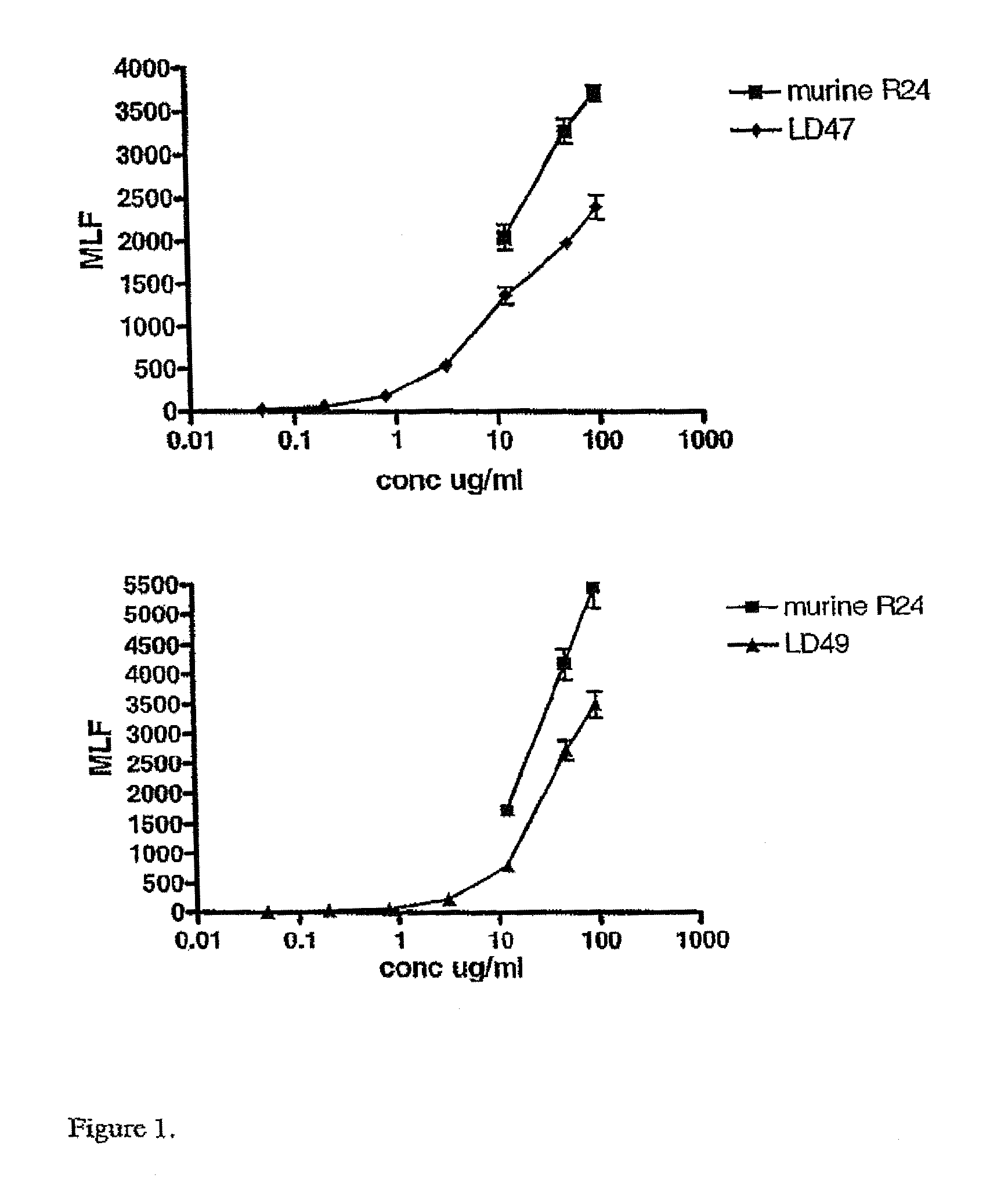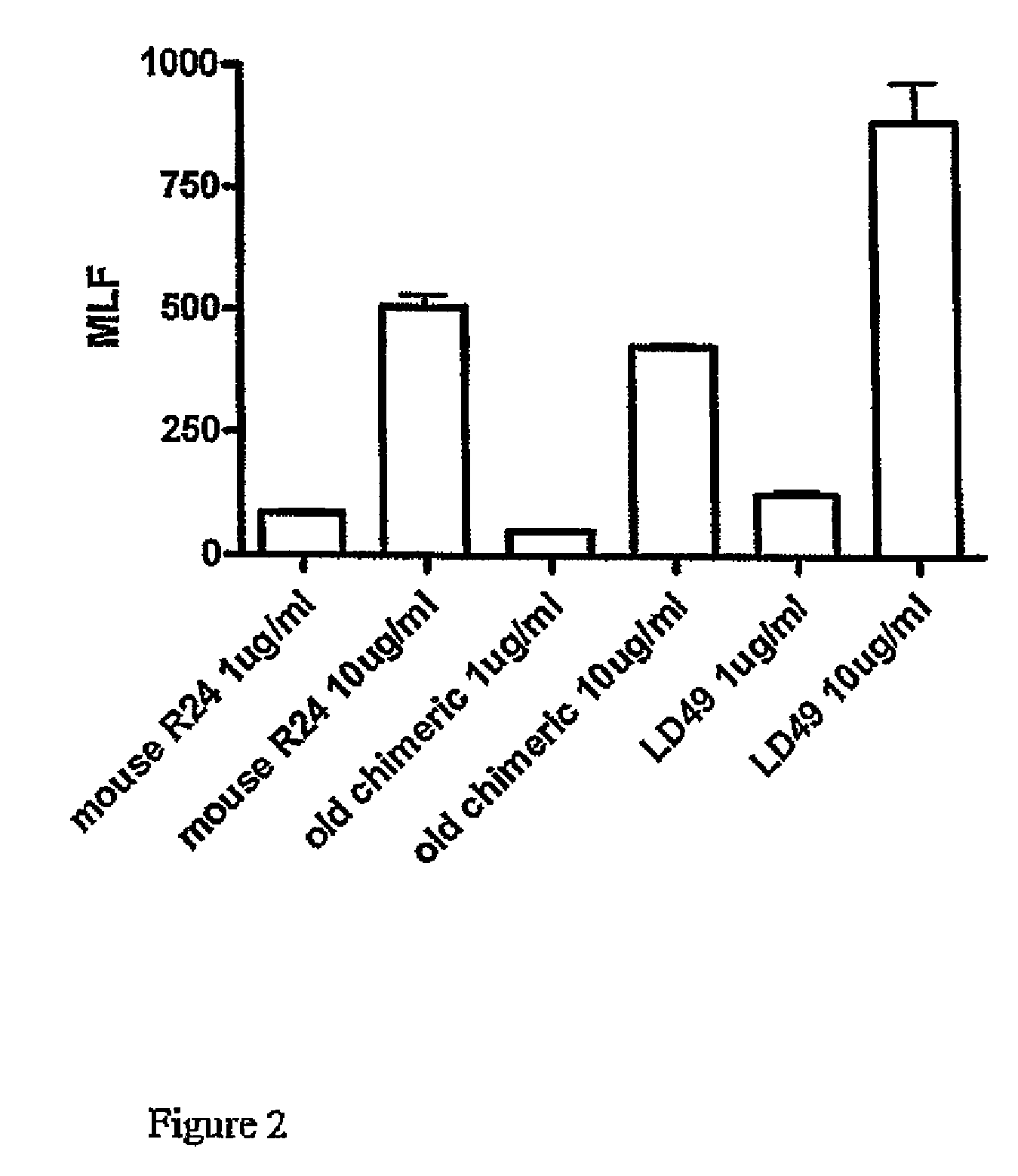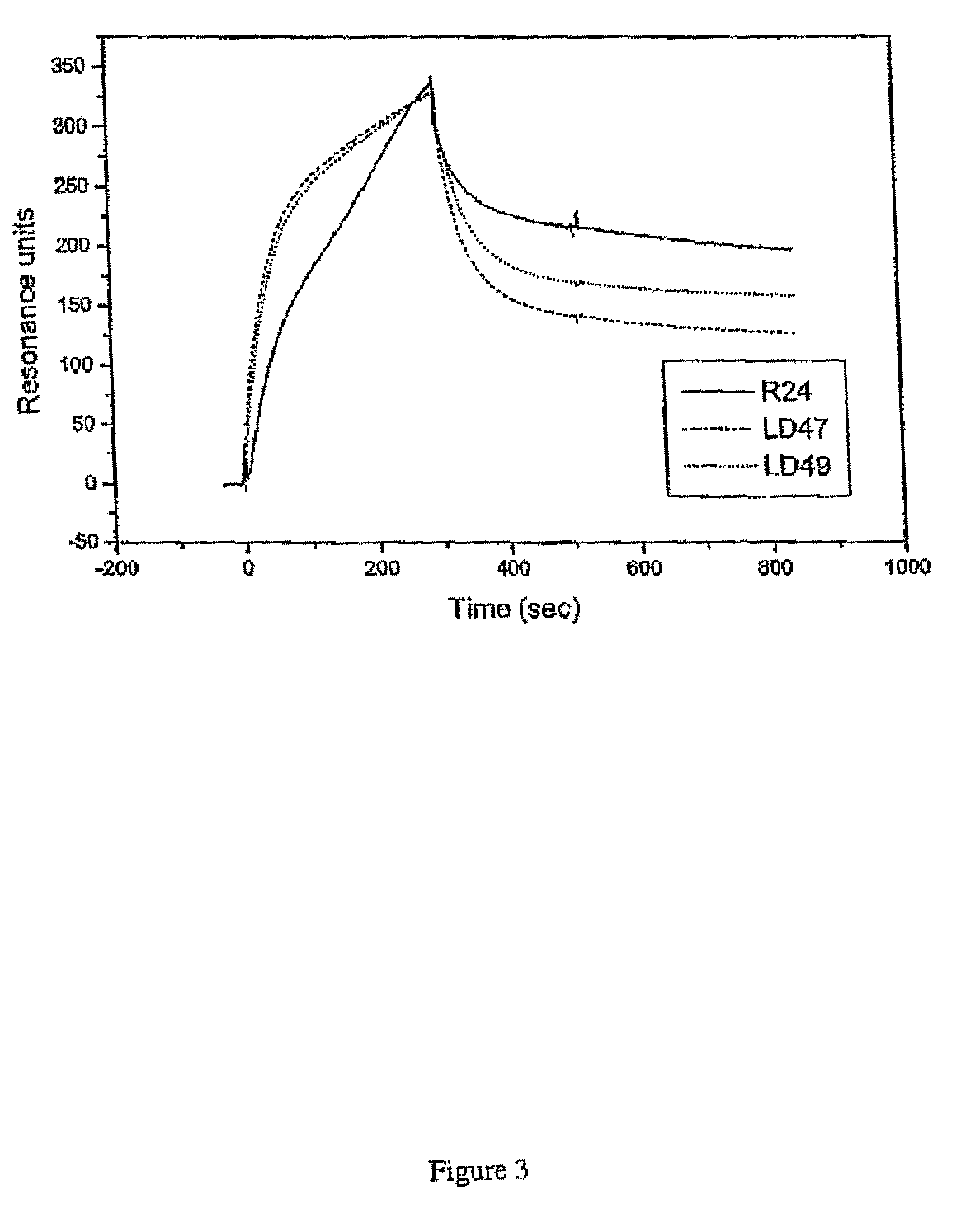Anti ganglioside GD3 antibodies and uses thereof
a technology of gangliosides and antibodies, applied in the field of humanized antibodies, can solve the problems of poor prognosis of such patients, little if any guidance on the selection of chemotherapy or immunotherapy regimens, and little if any agreement on treatment options
- Summary
- Abstract
- Description
- Claims
- Application Information
AI Technical Summary
Benefits of technology
Problems solved by technology
Method used
Image
Examples
example 1
Production of CDR-Grafted Humanized R24 Antibodies
[0155]The hybridoma cell line R24, created from mice immunised with human melanoma cells (see Dippold, W. G. et al., Proc. Natl. Acad. Sci. USA (1980) 77 (10):6114-6118) secretes an IgG3 antibody which is specific for the ganglioside GD3. The ganglioside GD3 is a tumour associated antigen overexpressed on most human melanomas.
[0156]The gene sequence for the R24 antibody has been submitted to the NCBI database: the kappa chain variable domain accession number is GI:6573606 and the gamma chain variable domain accession number is GI:6573607 (Kaminski, M. J. et al. J. Biol. Chem. (1999) 274 (9):5597-5604).
[0157]On analysis, the R24 kappa (vk) chain variable domain belongs to mouse subgroup 5 which corresponds to human subgroup 1 for the purpose of CDR grafting. The canonical class of each CDR was identified: CDR-L1 belongs to canonical class 2 (form B) (Al-Lazikani, B., Lesk, A. M., Chothia, C. J., Mol. Biol. (1997) 273:927-948), and bot...
example 2
[0182]Initial studies looked at binding of the humanized antibodies to human melanoma SK-MEL28 cells which express GD3. Binding of antibodies to target cells was assayed by direct immunofluorescence using a FITC-labeled secondary antibody. Samples were analysed by one colour cytofluorimetric analysis.
[0183]Both LD47 and LD49 showed a high binding affinity to SK-MEL 28 cells. In order to overcome problems in one of the effector function assays a different GD3 expressing cell line was obtained, the human melanoma cell line MeWo. Several binding assays were repeated using this cell line the results are shown in FIG. 1.
[0184]Antibodies were tested in separate experiments that gave different MLF responses of the reference R24 antibody. To enable comparison between the different tested antibodies, 30% of maximum binding of R24 was calculated for each antibody. A figure of 30% was chosen for comparison as some of the antibodies tested (not shown here) bound at low l...
example 3
[0190]The humanized antibodies were assessed to determine their ability to mediate CDC. The ability of the humanized antibodies to fix human complement was examined using MeWo cells. In the complement assay, antibody diluted in medium was added to the MeWo cells. Human serum complement was also added to final concentration of 5% and the cells incubated for 2 hours at 37° C. Subsequently, dead cells stained with propidium iodide were identified by flow cytometry. Antibody concentrations from 100 ug / ml to 0.1 ug / ml were used. The results are shown in FIG. 5. In order to compare the humanized antibodies the % cytotoxicity at 10 ug / ml was calculated and is shown in Table 2.
PUM
| Property | Measurement | Unit |
|---|---|---|
| pH | aaaaa | aaaaa |
| concentrations | aaaaa | aaaaa |
| concentration | aaaaa | aaaaa |
Abstract
Description
Claims
Application Information
 Login to View More
Login to View More - R&D
- Intellectual Property
- Life Sciences
- Materials
- Tech Scout
- Unparalleled Data Quality
- Higher Quality Content
- 60% Fewer Hallucinations
Browse by: Latest US Patents, China's latest patents, Technical Efficacy Thesaurus, Application Domain, Technology Topic, Popular Technical Reports.
© 2025 PatSnap. All rights reserved.Legal|Privacy policy|Modern Slavery Act Transparency Statement|Sitemap|About US| Contact US: help@patsnap.com



